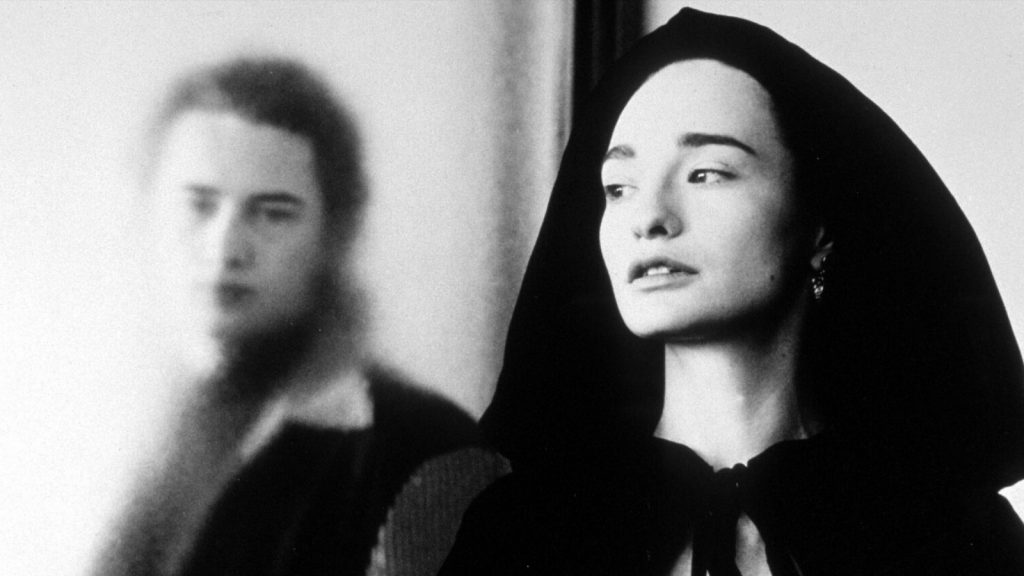
Nadja (1994)
Probably the least known movie we’re suggesting, Michael Almereyda’s Nadja was part of a brief wave of low-fi, artsy vampire movies in the mid-90s, which included Abel Ferrara’s The Addiction and Larry Fessenden’s Habit, and seemed to be at least as much metaphor as monster. Produced by David Lynch (who has a small part as a morgue attendant), it’s a black and white, odd little gender-flipped take on vampire lore, where Count Dracula is dead at the beginning of the movie, and his daughter, the titular Nadja (Elina Lowensohn), travels to a pre-gentrified Brooklyn to visit her dying brother (Jared Harris). Along the way, she has a brief fling with Lucy (Galaxy Craze—look it up, that’s her real name), who becomes instantly infatuated with her.
Though much of the movie, despite its moments of weirdness (such as Nadja’s brother nourishing himself with blood from shark embryos instead of humans), sticks with the general vampire tropes (there’s even a Van Helsing and a Renfield), Lucy’s dazed attraction to Nadja is what really makes it tick. She stumbles around and zones out as if someone’s shot her full of heroin, barely noticing her husband, who eventually helps Van Helsing track Nadja down back to Transylvania. Lucy is eventually freed of her intense attachment (and we all know what a relief it is for that kind of spell to be broken) when Nadja is killed, but Nadja gets the last laugh, in a bizarre, nicely creepy twist at the very end.
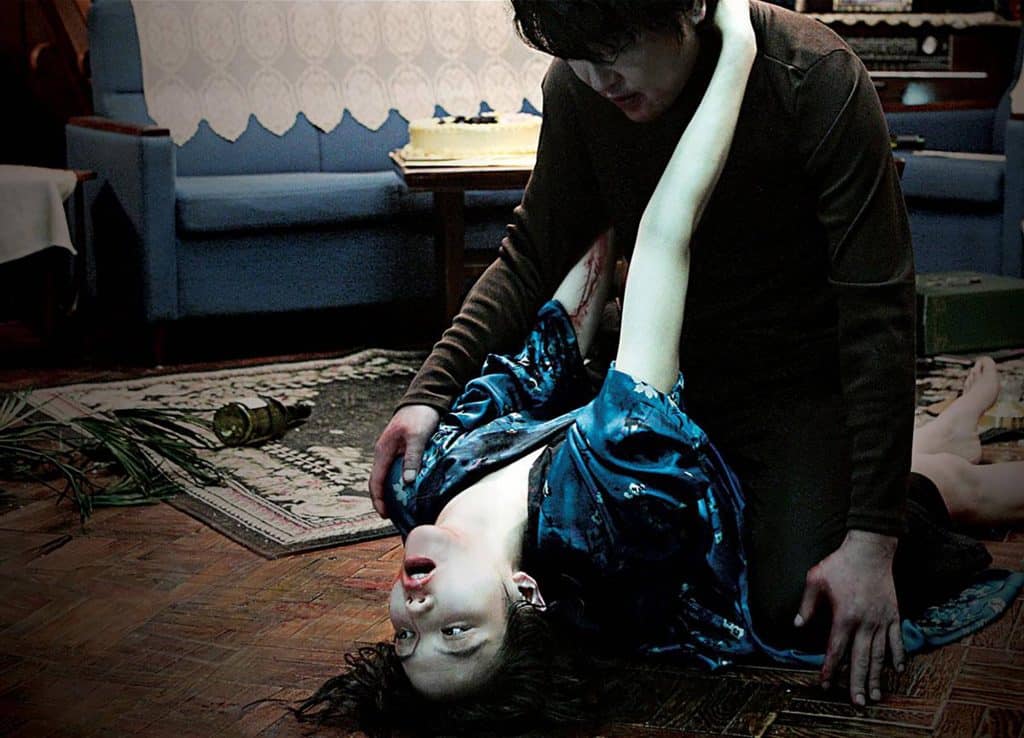
Thirst (2009)
A cynical view of what it means to be with the same person forever, Park Chan-wook’s gruesome, bleakly funny take on vampires and mindless lust seems the least likely “romantic” movie here, but it touches on the most relevant themes in the genre: repressed desire, forbidden love, passion leaving destruction in its wake. It goes one step further, though, and asks the question no one considers in these situations: what do you do when you finally have what you want, and it isn’t what you want after all?
Sang-hyun (Song Kang-ho) is a priest who’s miraculously cured from a leprosy-like disease after receiving a blood transfusion. Unfortunately, it’s also left him with a craving for blood, and a relentless attraction to his childhood friend’s wife, Tae-jun (Kim Ok-bin). Once Tae-jun’s husband is out of the way (and by “out of the way,” I mean “sunk to the bottom of a lake”), Sang-hyun makes her what he is, and he eventually learns that not only was she lying about the abuse she supposedly suffered at the hands of her husband, but she has no interest in laying low and living quietly and unnoticed, a hungry rat scurrying around in the dark like Sang-hyun himself. It’s a nasty twist on the notion of a person changing once you’ve committed to spending the rest of your life with them—what happens when the rest of your life is forever?
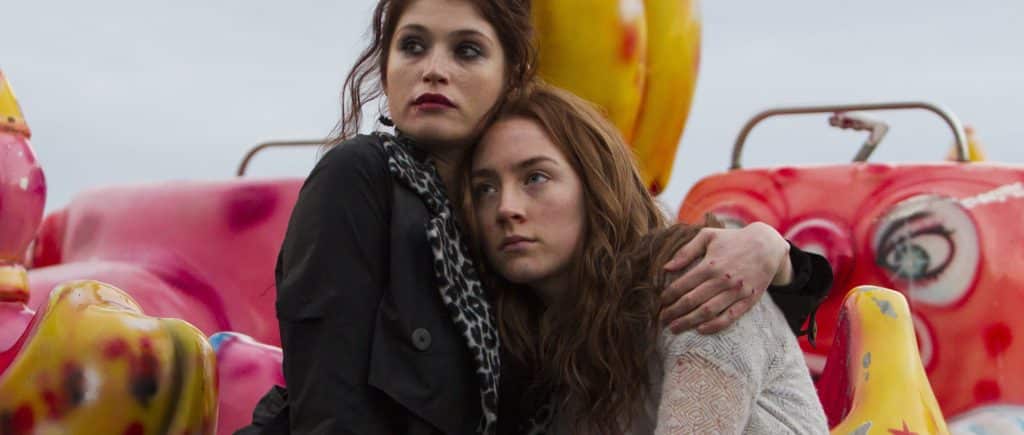
Byzantium (2012)
Before she was Lady Bird, Saiorse Ronan was Eleanor, a teenage vampire in Neil Jordan’s criminally overlooked Byzantium. Turned into a vampire by her mother (Gemma Arterton) to save her from a prolonged and agonizing death, she’s traveled the world for more than 200 years, always young, always beautiful, always desperately lonely. She meets Frank (Caleb Landry Jones), a boy her age (or rather, the age she seems to be) who’s dying of leukemia. She tells him fantastic tales of her life before she ended up in his little seaside town, stories of Dickensian orphanages and vampire “codes,” which Frank believes are simply the product of her colorful imagination, not realizing yet that soon he too will be given a chance to live an eternal life without pain – and that neither of them will have to be alone anymore.
Jordan’s dazzling film takes place in dual timelines, and features Jonny Lee Miller as a thoroughly loathsome villain, and Sam Riley, whose affection for Eleanor’s mother starts all this trouble in the first place. The core story, however, is Eleanor and Frank, and how the afflictions that force them to stay away from other people bring them together. Eleanor’s desire to save Frank (in the same way that her mother “saved” her 200 years earlier) is driven not only by wanting to spare him of any more pain and suffering, but to have a companion, someone who understands what it’s like to be an Other, in an unkind world.
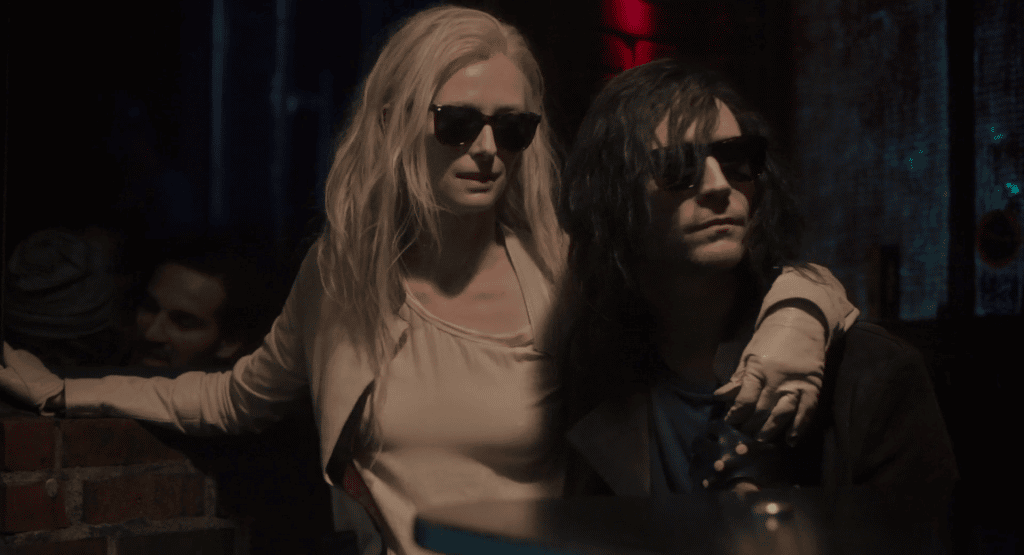
Only Lovers Left Alive (2014)
Jim Jarmusch’s Only Lovers Left Alive is a gorgeously written love letter to art and artists, a statement on an ever-changing world and how those changes affect inspiration and creativity. It’s also a story about a marriage, between beautiful sadboy Adam (Tom Hiddleston) and his ethereal wife Eve (Tilda Swinton), an artist and his muse who love each other so much they can’t live in the same place for too long. Also, they’re vampires. They might drink blood, but their vampirism isn’t remotely the most interesting thing about them, it’s almost an afterthought to the bond they share. Jarmusch has styled and written Adam and Eve as manifestations of Yin and Yang – opposite forces that are so interconnected one can’t survive without the other. Even living on opposite sides of the world, they touch a totem of the other—the white stone around Adam’s neck and the black stone around Eve’s wrist—before their nightly blood drinking. Talk about your spooky action at a distance.
While Adam shies away from humanity, hermiting himself in the abandoned wilderness of Detroit and moping to his errand boy Ian (a much-lamented Anton Yelchin), Eve seems to see beauty and life all around her, from the old men playing checkers at a night cafe to the skunk that waddles across her path. When Adam’s brooding becomes too insufferable even for him to take, Eve swoops in to deliver some love, blood popsicles, and wisdom. The point of life, she tells her “suicidally romantic” husband, is knowledge, stewardship of the earth, kindness, friendship, and love. It might not have much to offer by way of sex, but Only Lovers Left Alive is still one of the most romantic movies about a long marriage ever put on screen. The chemistry between Hiddleston and Swinton is so real, so irresistible, that it’s hard to believe their story will stop when the credits roll.
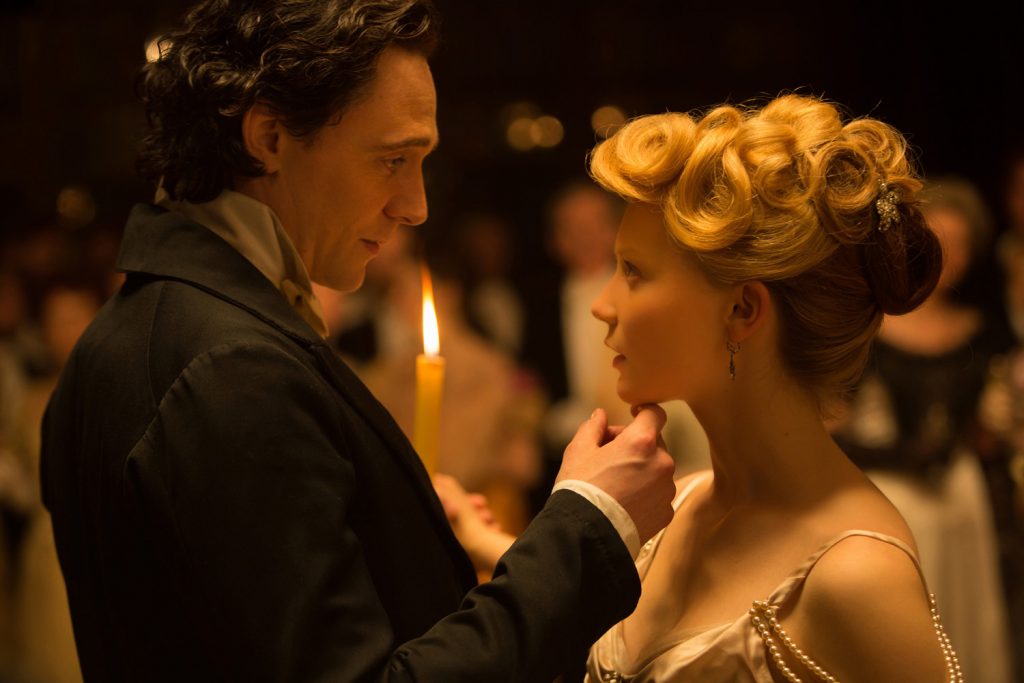
Crimson Peak (2015)
Paying homage to two of Beau’s personal favorites, Jane Eyre and Alfred Hitchcock’s Notorious, Crimson Peak is a delirious descent into all-consuming love. As one character says, “This love burns you, maims you, twists you inside out. It is a monstrous love, and it makes monsters of us all.” The monsters in Crimson Peak are both spectral and human, and while there are lines of dialogue outright cribbed from Jane Eyre, the heroine Edith Cushing (Mia Wasikowska) is a plucky American raised liberally by a doting father (the always-enjoyable Jim Beaver). Unlike Jane, Edith does not need a darker extension of the self to express her feelings of despair, desire, and rage.
When she meets impoverished nobleman Sir Thomas Sharpe (Hiddleston again), we see Edith as Thomas might. The film lingers on her like a lover’s gaze, a feast of bare shoulders and flushed cheeks. This is a story of attraction told in textures of silk and velvet under flickering gaslight. After marrying, Thomas spirits Edith away to the remote estate in Cumberland he shares with his sister, Lucille, played here with icy malevolence by Jessica Chastain. Allerdale Hall, known by locals as Crimson Peak, is a beautiful, sinking ruin that seems as alive as Edith, full of ghosts that only she can see. Here blood-red clay seeps into the white snow, doorway arches look like rows of sharpened teeth, and the fluttering black moths give the illusion that the walls themselves are breathing. It is the perfect setting for a story of doomed love, and of embracing the darker parts of ourselves. Here, beauty and horror and love and hate are so tightly entwined it becomes impossible to tell which is which.
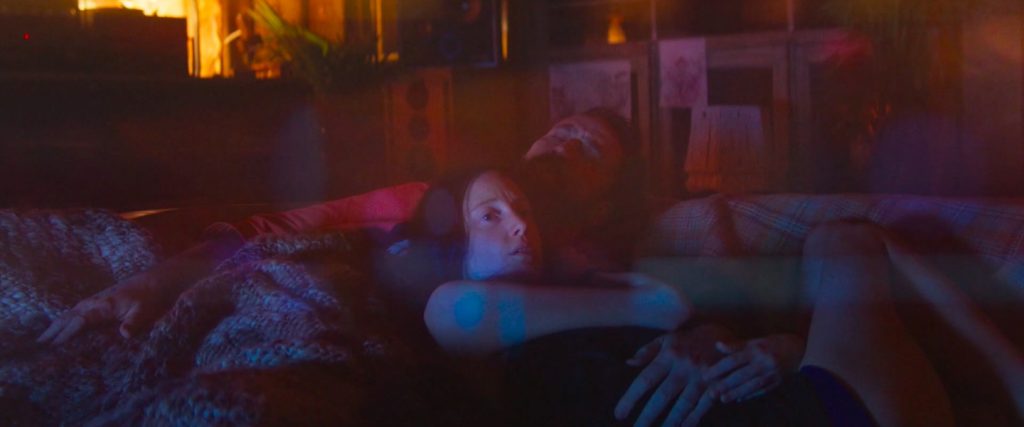
Mandy (2018)
True love never dies in Panos Cosmatos’ acid tab of a revenge horror movie. Red (Nicolas Cage) doesn’t tell his girlfriend, Mandy (Andrea Riseborough) how he feels about her, but he doesn’t have to – it’s all in his face, and how he looks at her with affection, awe, and even a little bit of fear. We don’t get much backstory in their relationship, but it’s obvious that shared trauma is something that brings them together and holds them close, Red because he’s a veteran and Mandy because of some unexplained hardship in her past.
Though Mandy, who barely speaks, seems as fragile as a bone teacup, she finds the strength to mock would-be cult leader and failed hippie troubadour Jeremiah Sand (Linus Roache) when he kidnaps her and tries to seduce her. Mandy all but shrieking with laughter as Sand stands naked in front of her is one of the most stunning film moments of 2018, and the character pays for it with her life. Though decimated by the loss of perhaps the only person who kept him going in life, Red takes that strength that Mandy let out into the universe and uses it to fuel a mighty, relentless act of vengeance, murdering everyone who took her away from him in an almost comically over the top manner. The chainsaw fights and hand-forged battle axes are forgotten at the very end, however, when an exhausted, satiated Red, covered in head to toe in blood, gets one more glimpse at his lost love, and thinks about when they first met, in the most unremarkable, mundane manner, the way most of us meet our loves.
These may seem like some off-beat choices, but if Valentine’s Day is a celebration of love, then let it be a celebration of all aspects of it. Romantic love, platonic love, the kind of love that hurts and leaves us gasping for air. Let it be a day to recognize the truth, that love is wonderful and lust is great, but love also destroys, and lust has lots of sharp teeth.